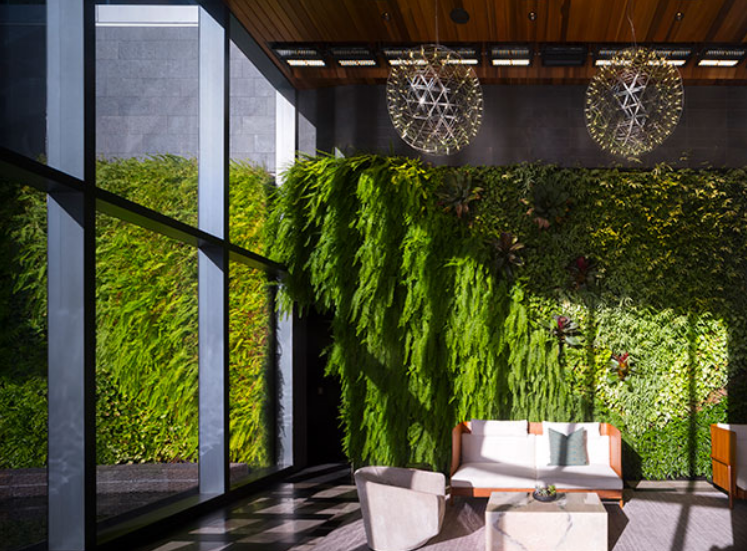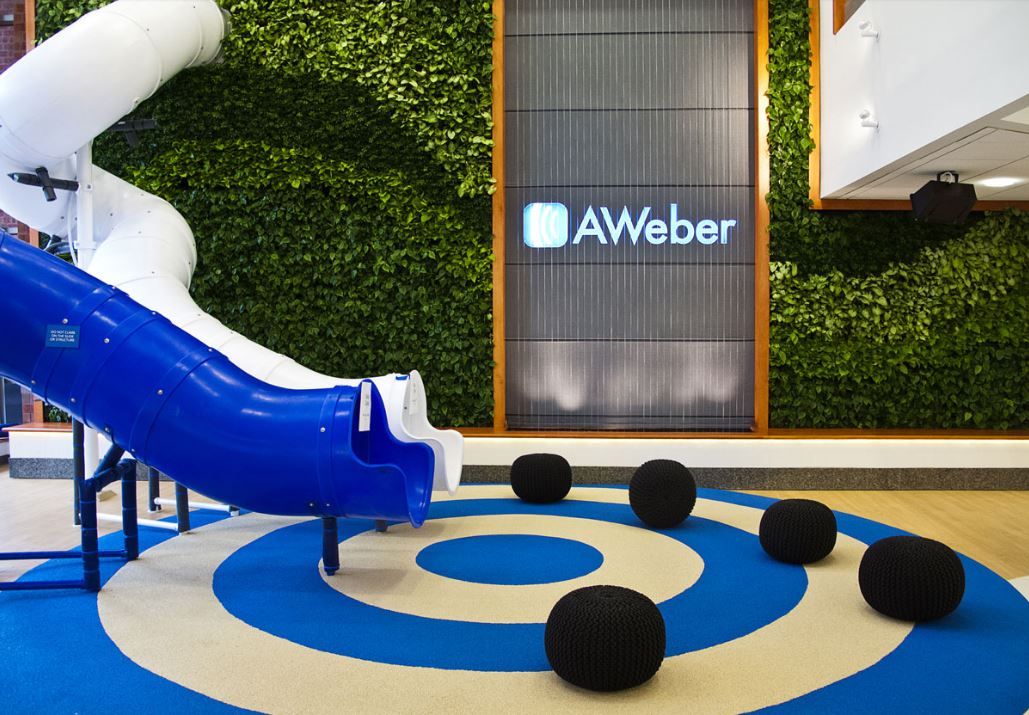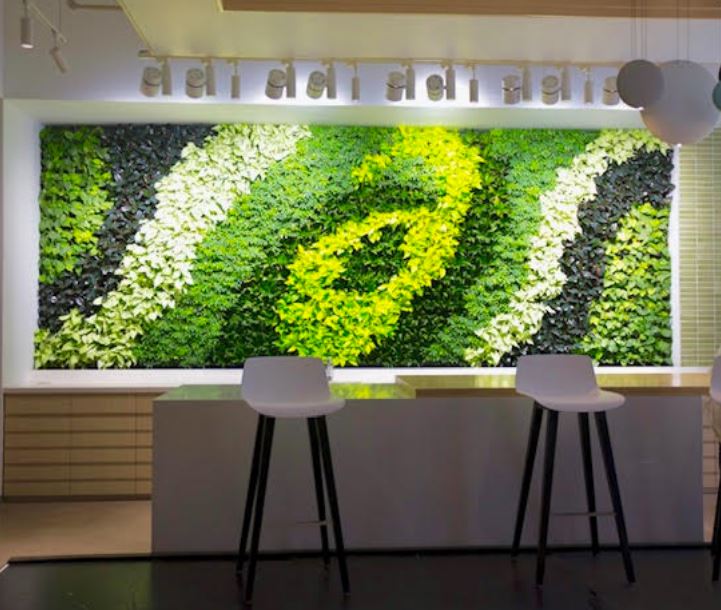Green Work Environments
The growth for the green infrastructure industry in Australia needs the backing of a strong economic benefit for commercial building owners. As buildings age, long term tenants start to look elsewhere for new office space especially if they want to keep their staff loyal and content.... leaving vacant offices and reducing rental income for the owner. A retrofit with green walls has long term economic benefits, that is, it increases building value & rental income ... read on to see why.
"Prominent biologist E.O. Wilson argues that there is a genetic proclivity on the part of humanity to focus on and affiliate with nature, or more specifically with biodiversity."
Competition for employees is fierce. As the labor market tightens toward full employment, companies continue to develop new and innovative ways to attract and retain top talent.1 Two major tools are branding, the values and aesthetics that set companies apart from their competitors, and employee experience, the day-to-day amenities and aesthetics of the workplace. Interior designers for some companies are adopting a solution that boosts workplace allure on both counts and energizes spaces: living green walls.
Attracting Millennial Employees with Green Branding
For many organizations, adapting to the demands of the information economy is a priority, and the talent pool skews younger for digitally savvy professionals. As a result, many companies are updating branding and experience to satisfy Millennial tastes. So, are there any discernible trends in the generation’s preferences? According to a National Gardening survey, 5 of every 6 Americans to take up gardening in a year were between 18 and 34 years old.2 When making purchasing decisions, nearly three-out-of-four Millennials are most willing to pay extra for sustainable offerings.3Seventy-six percent of Millennials consider a company’s social and environmental commitments before deciding where to work.4 In a word, Millennial taste is green.
Interior designers and architects for major companies are taking notice and installing sustainable design elements in high-profile locations at their properties. Some companies take the branding opportunity literally. Indeed, important corporations in a variety of markets are adopting the novel architectural element. Walls have cropped up in such diverse settings as healthcare centers, law firms, and the corporate offices of global car manufacturers, not to mention their high popularity in the hospitality and retail sectors. Perhaps the most telling endorsement of the living green wall as a Millennial magnet comes from technology corporations, including digital first companies like Etsy, Mashable, and AWeber. Microsoft, Google, Twitter and others
Biophilic Design for Office Productivity
Green design is not simply a question of appearance. Plastic plants would be a cheaper investment, but fake green walls miss the point for employees.Ultimately, while young people today may be more interested in green design than past generations, there is a growing body of evidence that all of us are inclined to be around live plants. Prominent biologist E.O. Wilson argues that there is a genetic proclivity on the part of humanity to focus on and affiliate with nature, or more specifically with biodiversity. The Biophilia Hypothesis, as it is termed, draws from the fields of evolutionary biology and psychology for support. As a body of scholarly work continues to grow, the various benefits of exposing people to nature become clearer. For example, findings suggest that “even unspectacular natural settings can promote stress recovery faster and more completely than urban environments lacking nature.” Other research suggests that exposure to nature can induce positive shifts in emotion, facilitate high-order cognitive functioning, and even increase creativity and productivity.

The growing trend toward living walls is not completely independent of other workplace changes. The open-plan office, for example, creates certain issues that segmented offices avoided if not by design then by accident. The door and the cubicle divider in traditional office spaces provided semi-private work spaces, but it is important to consider their qualities. Certainly, these dividers created visual barriers, but they also controlled the auditory environment by trapping sound waves in compartments. Living walls are excellent at absorbing sound, making them a solution to an issue created by novel office design.
Office architecture and design earns a reputation for drab repetition, and even sleek new offices are in danger of seeming sterile. Biophilic design and corporate branding may seem at odds at first, but Millennial fondness for flora means that both can help hire young professionals and get the most out of them. GSky’s Versa Wall® system provides architects and interior designers a canvas for creating living art that helps people breathe and boosts their productivity. When designing a space to advance the objectives of a corporate client, living green walls are a sustainable option with the flexibility to meet the specific demands of any indoor space or corporate imagination.
It's a win win situation for both building owners and tenants which also enhances the urban environment.
Reference: www.greenroofs.com








